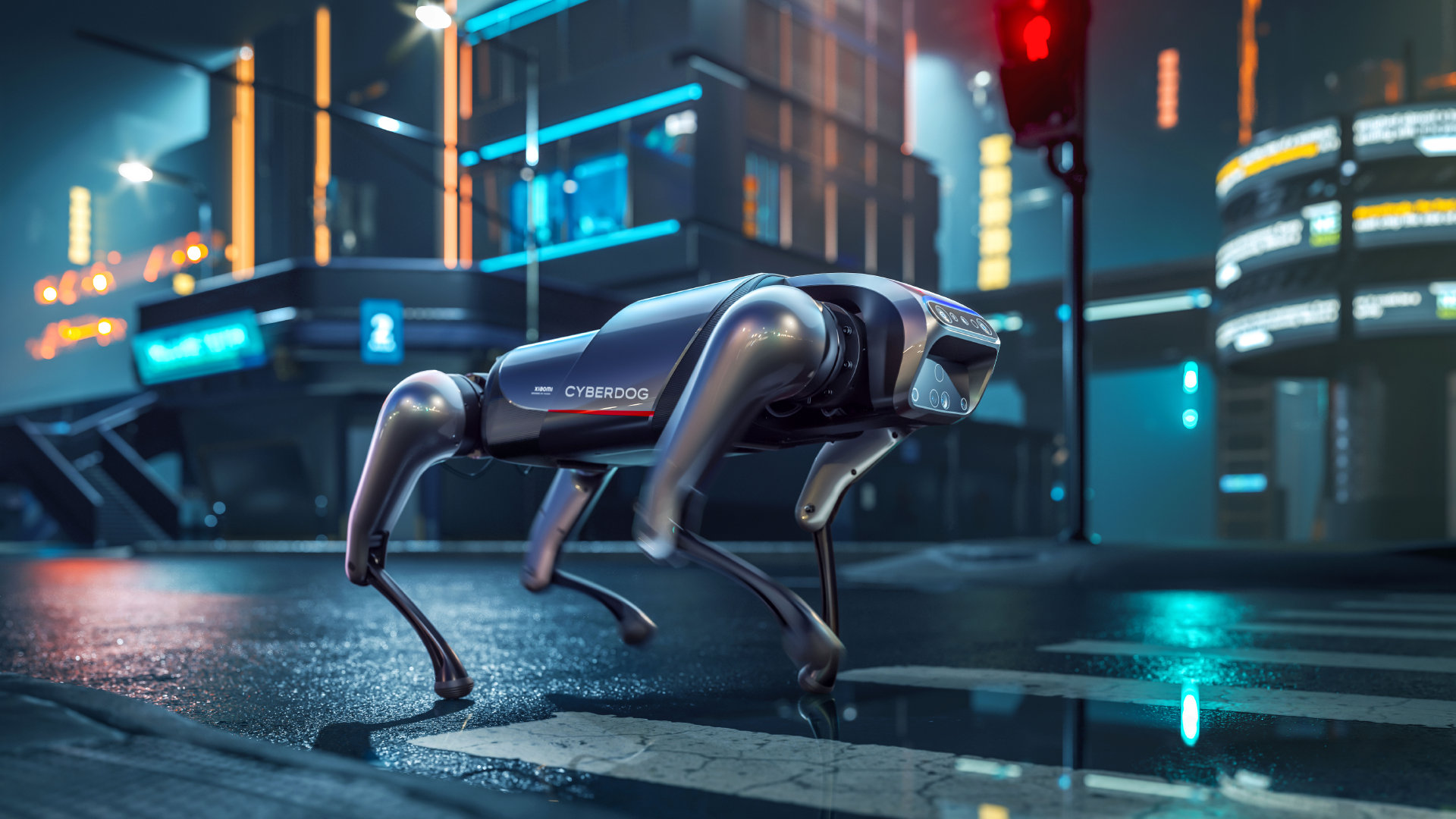There are many imaginations about robot dogs, but before commercialization it has to first deal with the high cost and multiple technical barriers. This means much remains to be done for the robot dogs to walk into our daily life. However, Cyberdog, a robot dog that is halfway into the market, is releasing a positive signal.

Robot Dog Picks up Delivery
Cyberdog is a popular robot dog developed by Xiaomi. It can run and perform actions such as turning, bowing and shaking hands. Furthermore, it can talk with its owner, as well as control smart devices at home and automatically follow its target in open environments.
At present, Cyberdog is still in the engineering stage, which is equivalent to an exploratory development platform targeted at geeks, university researchers and avid Xiaomi fans. Huang Changjiang, a software engineer at Xiaomi Robotics Lab, hopes that they can use the open-source community to develop the product with users and overcome problems together.
Unitree Robotics is one of the pioneering companies that launched the R&D of robot dogs, with a focus on consumer and industry-level quadruped robots. Currently, Unitree releases robotic dogs positioned as technological playthings, educational program and companions, which keep users’ company on walks and runs. Unitree has also introduced a robotic arm solution. The founder Wang Xingxing explains, “Our robotic arm can be mounted on industry-level robot dogs to perform acts such as grasping and opening doors. It is more dexterous and larger than a human arm compared with a traditional robot arm with load capacity.” Perhaps robots will soon be able to pick up delivery packages.

Apart from adding a robotic arm, hexapod robots can solve the problem of grabbing. Gao Yue, Associate Professor at the School of Electronic Information and Electrical Engineering, Shanghai Jiao Tong University, has been working with her team to develop a hexapod robot. “Nature is amazing as always. Insect-like hexapod creatures move more steadily, but the quadrupeds are usually more intelligent,” she says. Gao describes their robots as “muscular” and highly load-bearing. A quadruped robot cannot function properly if one of its legs fails, but a hexapod robot can remain stable all the same. Moreover, the legs can be used as hands when they are automatically turned over, ensuring balance and holding things at the same time.
Guide Dog in the Future
Unitree Robotics once cooperated with Baidu on a robot guide dog, but the technology in this area is not mature enough. Given that the current AI settings of robot dogs are not reliable enough in addressing safety issues, it is not yet the time to fully allow AI to guide the path for the blind.
Ensuring safety is also what Gao Yue prioritized in developing the robots. In her view, the research and development of robot dogs should now focus on dealing with dangers, tackling harsh environment and replacing humans’ repetitive work. For example, robots can be used for nuclear power plant inspection, firefighting and disaster relief. After solving these relatively difficult problems, the team will be able to explore more application scenarios. Gao Yue said, “I think it is more suitable for robot dogs to replace some dangerous or tiring jobs now. When people are in danger, robots can protect people or complete the dangerous work for them.”
Robot Dog as a Companion
In Ningde, Fujian, digital enthusiast Mrs. Yun bought a Cyberdogas a birthday present for her child. Now the Cyberdog has become a member of the family who picks up its young master from school and plays with him along with the cat at home. The team defines Cyberdog as “a robot like a dog, an AI carrier, rather than a real dog”. Huang Changjiang envisioned that in the future, it can be used as a housekeeper to take care of the elderly and children, such as giving an alarm when the elderly fall, just like Jarvis, the AI helper of Iron Man. Companionship may be one of its functions. Robot intelligence, including human-computer interaction and autonomous collaboration, is Gao Yue’s research direction. She said that the core of human-computer interaction lies in whether the robot understands people’s expressions, thoughts and behaviors. In the design of algorithm, she once again emphasized the safety issues, such as how the robot evaluates the state of people and makes predictions. In this process, emotional interaction is the most challenging problem.

Besides technical barriers, the tug-of-war between technical cost and retail price, and the balance between price and performance are also affecting the popularity of robot dogs. “This may be a business dilemma. What we consider is how to balance technology and user experience when it comes to the consumer-end (individual consumers) and make it more like a true pet dog.” said Gao Yue.
Source: The Paper


